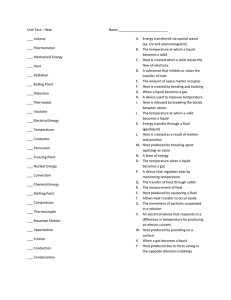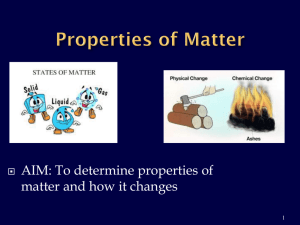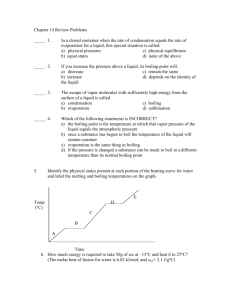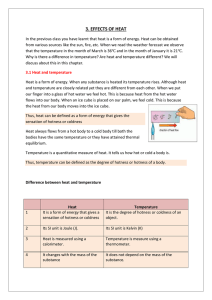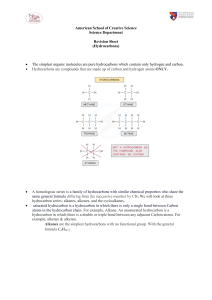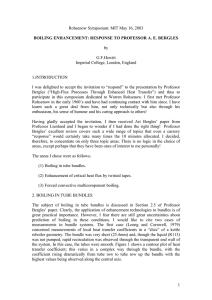Ch. 2 Jeopardy
advertisement
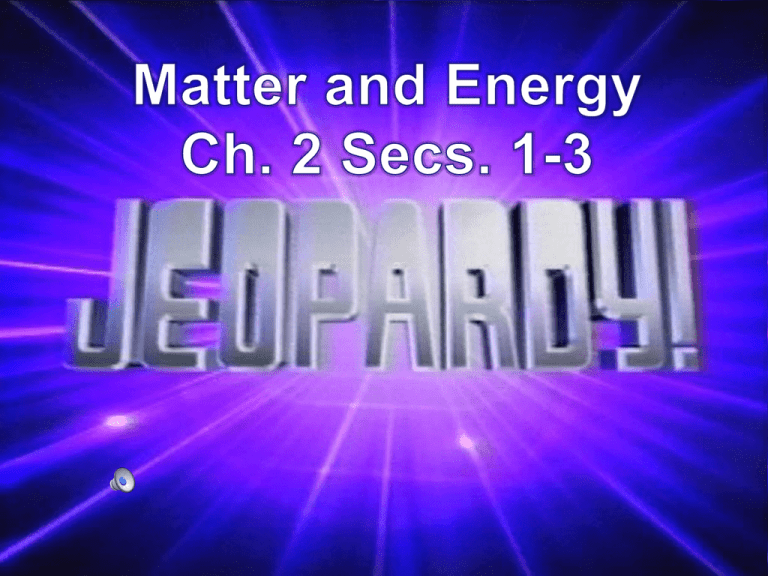
Ch. 2 Sec. 1-3 Matter and Energy Matter is made of atoms Matter combines to form different substances Different States of Matter 100 100 100 100 200 200 200 200 300 300 300 300 400 400 400 400 500 500 500 500 Matter has mass and volume Texture, shape, size, and color are all examples of... Physical Properties True or false. When the state of matter change, it is considered to be a chemical change. False; only the arrangement of the atoms changes. Density describes the relationship between a substance’s A.matter and mass B.mass and volume C.volume and are D.temperature and mass B. Mass and Volume What is the formula to determine density? Mass divided by volume (m/v) The only TRUE indication that a chemical change has taken place is... A new substance is being formed! Name ONE of the FIVE indicators that a chemical change has taken place. 1. Color Change 2. Formation of a gas 3. Formation of a solid 4. Production of an odor 5. Temp. change What is the process in which a solid becomes a liquid? Melting . What are the two processes in which a liquid becomes a gas? Evaporation and Boiling How do evaporation and boiling differ? A.In evaporation, there’s a formation of gas. B.In boiling there’s a formation of gas. C.In evaporation, a gas becomes a liquid D.In boiling, a gas becomes a liquid. B. In boiling, there’s a formation of gas How do the freezing point and melting point of a substance relate? They are the same temperature! What is the process in which a solid changes directly into a gas? Sublimation What is the boiling point of water? 100 degrees Celsius or 212 degrees Farenheight What is the process in which liquid becomes a solid is known as Freezing __________ is the measure of how much of a substance dissolves in a given volume of a liquid. Solubility True or false. You should always use your five senses to help you identify a substance. FALSEEEEEE!! AHHH What process is this picture depicting? Melting What is the unit used for density? g/cm cubed Whether a substance is a solid, liquid, or gas depends on how close its atoms are to one another and... How free the atoms are to move True or False. Particles in a liquid of any temperature will move at the same rate. FALSE. They will move faster at higher temperatures. True or False. You can identify a substance’s identity just based on its density. FALSE. Many items may have the same densities.



